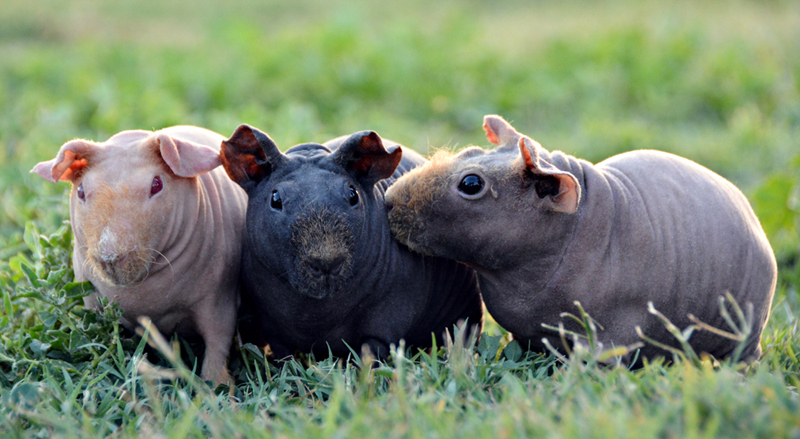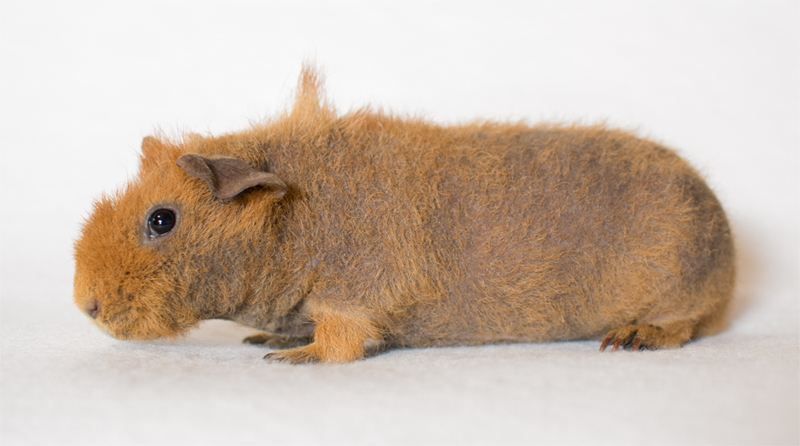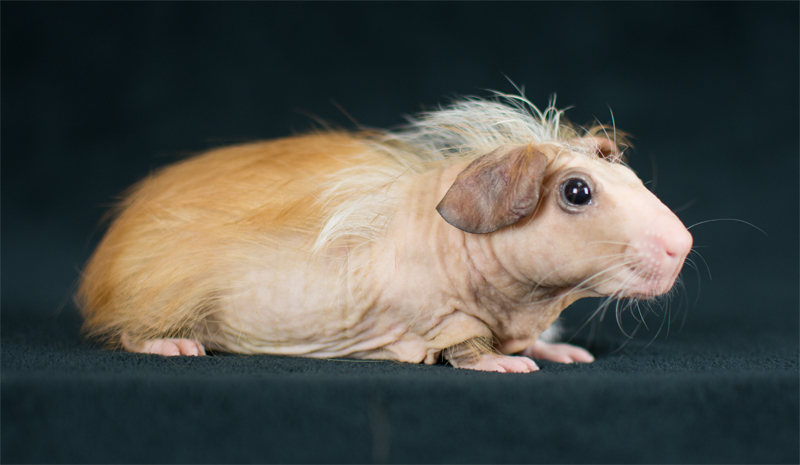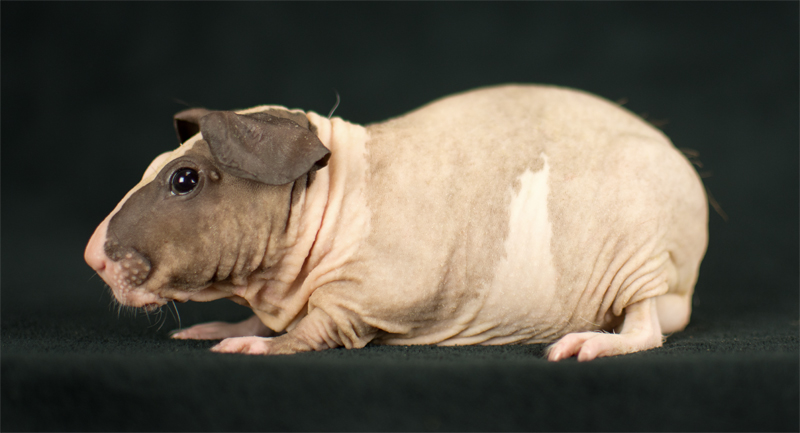The Skinny on Skinny Pigs
The Skinny Pig breed is the result of a random mutation that occurred in a laboratory in the 1970's. These mostly-hairless guinea pigs were later made available to pet and hobby breeders, and have become one of the most unique breeds of guinea pig.

What makes a skinny pig a skinny pig?
Skinny pigs have hair on their faces and the tops of their feet. They are usually born hairless except for these areas, but some start out with a little extra that they lose in the first few weeks. Skinny pigs can have any color hair, and they have markings on their skin just like furry guinea pigs have on their coats. They are called "skinny pigs" because they lack most of the fat deposits found on the necks and shoulders of furry guinea pigs.
Why don't they have hair?
Skinny pigs each have two copies of a recessive gene that codes for their particular pattern of mostly-hairlessness. When bred with any other type of guinea pig, the offspring of this cross will be furry, but each will carry a single copy of the hairless gene. These carriers have a chance of producing a skinny pig baby when bred with a skinny pig or another carrier. Two skinny pigs bred together will produce only skinny pig babies, but frequent outcrossing to other breeds helps increase genetic variation and keep the bloodline strong.

Are they healthy?
Yes! Skinny pigs are as healthy as any other breed of guinea pigs. They have a normal lifespan and no higher incidence of genetic disease as long as excessive inbreeding is avoided. All guinea pigs are best kept indoors where they won't get too cold or too hot, and skinny pigs in particular need to be protected from direct sunlight and cold drafts.
Is every hairless guinea pig a "skinny pig"?
Nope! There is another, unrelated breed of hairless guinea pigs called "Baldwins". This genetic mutation came from a line of white-crested golden agouti guinea pigs from breeder Carol Miller of San Diego, California. Baldwins are born furry, but the hair soon falls out, leaving them completely bald by the age of about 8 weeks. The gene that makes Baldwins hairless is completely different from the gene that makes skinny pigs hairless, so crossing the two breeds won't actually result in any hairless babies. Since both breeds arose from mutations within small gene pools, crossing Balwins and skinny pigs is not recommended.


Are skinny pigs hypo-allergenic?
For many people with allergies, the trigger is actually skin dander. Skinny pigs have just as much skin as furry pigs so for these types of allergies, a skinny pig will still be a problem pet. However, some people suffer an allergic reaction specifically to the hair follicles and in this case, skinny pigs can make lovely, low or non-allergy-inducing pets. If you are allergic to furry guinea pigs and are not sure the exact cause, a test-date with a skinny pig may be a good way to find out if your sensitivity is to the skin or the hair.